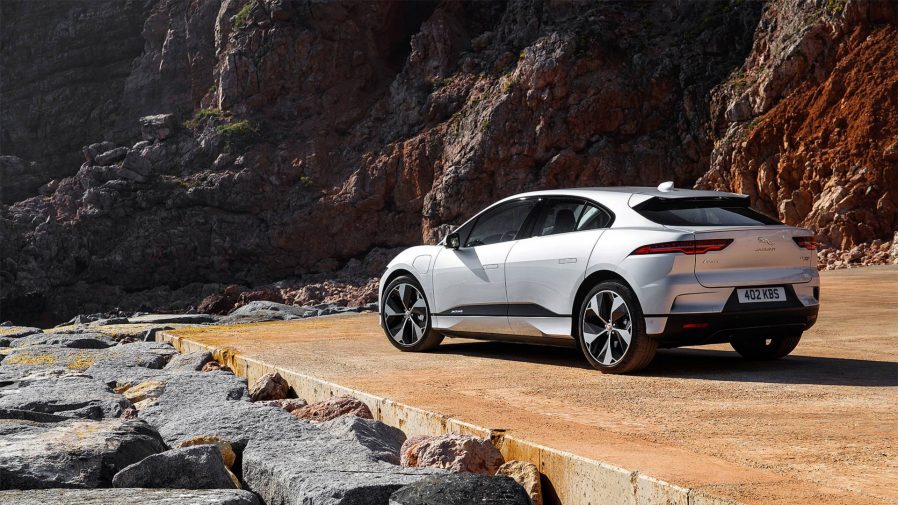
42 M BY MARK KANE
Jaguar I-PACE initially is not even ready for 100 kW charging.
Bjørn Nyland continues tests of the Jaguar I-PACE and took the car to the IONITY ultra-fast charging station in Germany, that in theory should be able to put out 350 kW at 800 V (or at least half of that in case of lower voltage battery packs).
Officially, Jaguar I-PACE is rated for 100 kW from CCS Combo chargers (0-80% charging should take around 40 minutes). However, in reality, it was good only for about 84 kW at peak and, according to Bjørn, Jaguar is expected to make 100 kW (or even 120 kW) possible later (in coming weeks or months).
As you can see on the graph provided by Bjørn, Jaguar I-PACE doesn’t offer charging power equal to Tesla cars, although higher-voltage battery packs seem to help a little bit.
The advantage for long-distance travel is to leave the ultra-fast chargers at around 60-70% state-of-charge (around 50% SOC power is decreasing) or at around 85% in the case of ordinary 50 kW chargers (I-PACE can take up to 48.6 kW from those units).
Charging power comparison in kW
Charging speed comparison in km/h (it takes into account energy consumption)
Below you can see that high energy consumption of the I-PACE translates to lowest pace of replenishing range among other long-range EVs (Tesla Model X, Kia Niro EV or Hyundai Kona Electric).
Jaguar I-Pace specs:
- 90 kWh battery for up to 480 km (298 miles) of range (WLTP)
- 0-100km/h (62 mph) 4.8 seconds / 0-60 mph (sec) 4.5 seconds
- Top speed mph 200 km/h (124 mph)
- two permanent magnet electric motors; synchronous – 400 PS (294 kW) total system output
- all-wheel drive
- 0-80% DC fast charging in 40 minutes using 100 kW CCS Combo
- 0-100% AC charging using 7 kW 0n-board charger in nearly 13 hours


